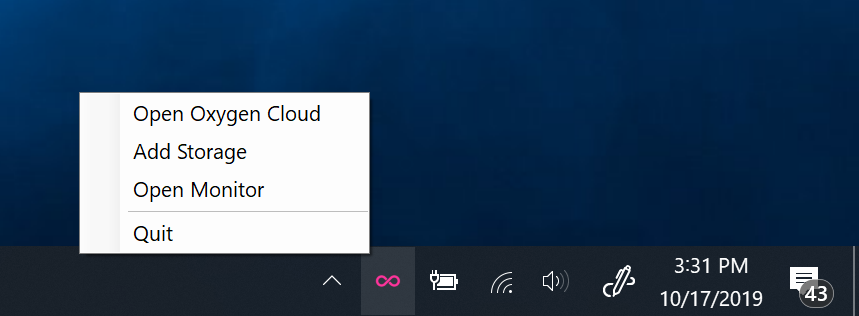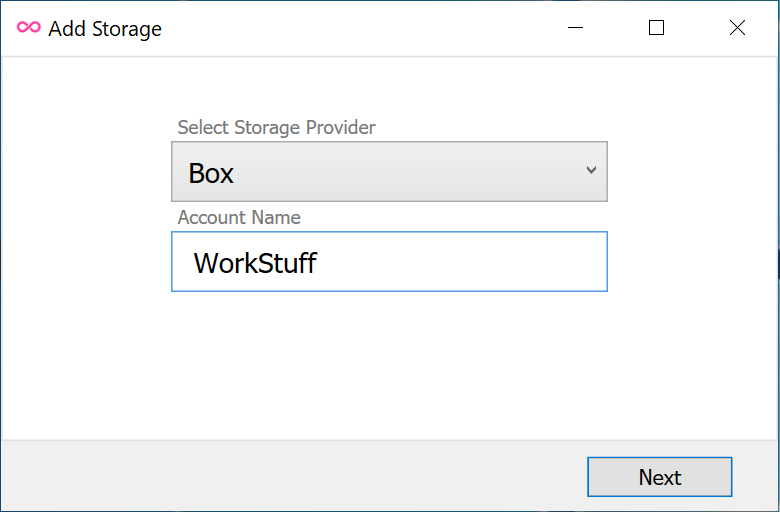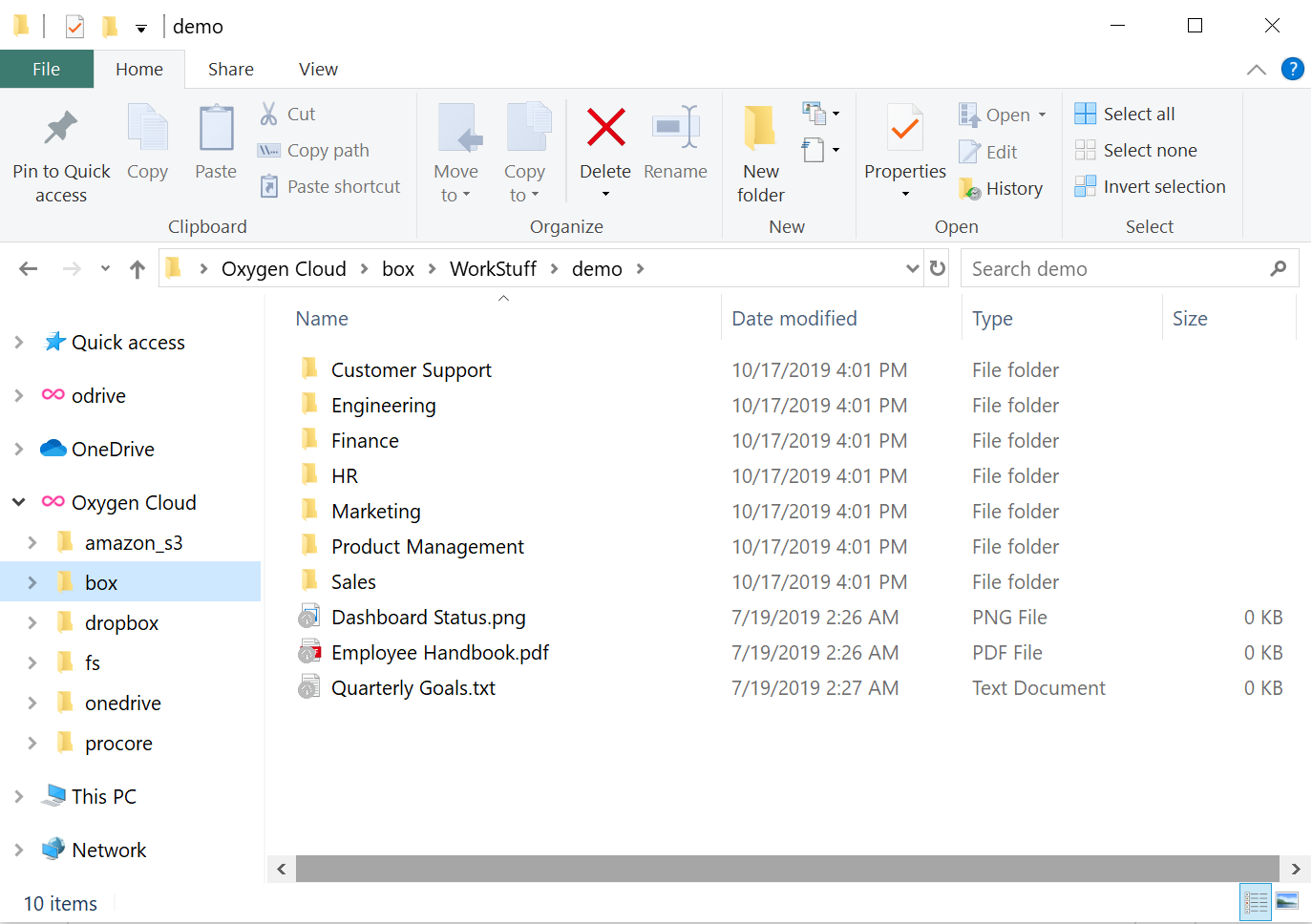Oxygen Drive
Get the new cloud drive for IT Admins. Connect any server to any cloud storage.
Introduction
Oxygen is a universal cloud drive for attaching cloud storage to Windows servers. IT admins can mount new or existing storage accounts from Amazon, Box, Dropbox, Google, Microsoft, Procore, and Wasabi. IT admins can also mount private storage with Oxygen File Server.
Native Access
Oxygen works as an extension of the file system. Users natively access cloud storage from File Explorer. Applications natively access cloud storage without modification. The integration is similar to a network drive, except it works with cloud storage.
Infinite Scalability
Oxygen provides fast, synchronized access to storage at any scale. It progressively synchronizes cloud storage on usage, thus eliminating the overhead and delay of syncing everything. The result is responsive access to infinite storage.
Maximum Efficiency
Oxygen minimizes CPU load, disk space, and network consumption. It only syncs and downloads files on access. It doesn't waste resources doing unnecessary work, which keeps the office Internet connection free and the local disk space available. Oxygen can even offload inactive files to keep everything fully optimized.
Proven Reliability
Oxygen comes from odrive, which has already connected and synchronized over 600,000 cloud storage accounts. The patented technology in Oxygen is battle-tested and ready for IT admins to connect servers to cloud storage.
Install Oxygen Drive
Follow these simple steps:
- Run the installer from download.
- Once the installer completes, click on the tray icon menu in Windows and select Add Storage to connect your first storage.

Connect storage account
Select the "Add Storage" option from the Oxygen Drive desktop tray menu. From the dropdown picker, you'll be able to select the storage type you want to connect. Give the storage account a name to distinguish the storage from other storage accounts you've linked.

At this point, a browser window will open, allowing you to sign in to Box in order to authorize access to your storage. After signing in, you should see a confirmation message saying Box account authorized.
Access cloud storage
An Oxygen Drive folder is created for accessing your connected storage. The virtual folder is accessible from Windows File Explorer, application file dialogs, and the terminal (powershell or cmd). Use the Oxygen Drive folder like any other folder. However, when you open a file for the first time, a download dialog appears to show progress retrieving data from storage.

Download
Double-click on a file to open it as normal. If the file has not been accessed yet, you will see a cloud badge on the file's icon. Opening a file with a cloud badge will first trigger download. A file download progress indicator window will appear to give you feedback.
If you need to download a file (or files in a folder) for offline access without opening the file, you can right-click the file or folder and select the "Download" option.
Offload
The right-click "Offload" option will immediately release the associated disk space and revert the file back to having a cloud badge. An internet connection will be required to download the file on-demand in the future.
Automatic Offload
You can schedule daily automatic offload to free up disk space by selecting the "Auto Offload" option from the desktop tray menu. Use the configuration dialog to set up your daily offload rule.

The scheduled task will occur at the specified time of day and will revert any downloaded files in the entirety of the Oxygen Drive back into on-demand access mode. Only files which meet the inactivity time threshold are affected. Inactive files are files which have not been uploaded or downloaded within the inactivity time specified.
Reorganize files
You can rename and move content within the infinity folder. However, storage content may only be copied and not moved across storage providers.
Update files
You can open, edit, and save files as usual. Changes automatically synchronized to storage.
Oxygen Drive uploads changes to storage asynchronously. Applications do not have to wait. If the machine is offline or the storage provider is unavailable, the changes will sync when the network and the storage provider are available.
Monitor Sync
Changes sync automatically. Files that are uploading will have a fuscia "in progress" file badge shown on it in Windows Explorer. The user can also monitor sync activity with the Monitor window. Open Monitor from the system tray menu.
Handle sync errors
Changes may not always sync with storage. For example, if you don't have permission to update files, changes you make on your machine are not allowed to sync to storage.
Oxygen Drive shows the list of pending changes (sync errors) in the Monitor. You can retry sync if the error is temporary.
Ignore sync errors
You can also ignore a failure in Monitor by clicking on the X next to the item. You may want to do this if you're aware of the problem and just want to clear it from your list. Once you ignore your first failed item, a checkbox to toggle whether or not to show or hide ignored items will appear. Ignored items can also be retried at a later time, if desired.
Handle sync conflicts
Oxygen Drive detects conflicting changes and displays them in Monitor. You can resolve the sync conflict by choosing the version to keep.
Import data
You can import small amounts of data by dragging and dropping the folder into the Oxygen Cloud folder. The volume of data you can import is limited by your available disk space to stage the upload. Use Sync Monitor to see import progress.
For massive data sets, use the Drive Import option to upload files in place without making staging copies in the Oxygen Drive folder (coming soon).
To start importing from local storage to remote storage, right-click the source folder, and select the Drive Import option.
Export data
You can export data with the Drive Export option. Use the export option to bulk download files to disk without staging copies in the infinity folder (coming soon).
To start exporting from remote storage to local storage, right-click the source in the infinity folder and select the Drive Export option.
Copy data
You can copy files and folder between storage accounts with the Drive Copy option. Use the copy option to download and upload data between storage accounts without making local copies (coming soon).
To start copying across storage account, right-click the source in the infinity folder and select the Drive Copy option.
Manage application access
Commonly used applications have been added by default as allowed apps which can trigger download of files with a cloud badge on them. The first time you attempt to open a cloud-badged file with an application that is not recognized will be denied. A window will appear to ask if you want to allow this application to download files in the future.
Use the Manage Access option from the menu to see and configure which apps are allowed to download cloud-badged files.
Create custom exclusion filters
You can create a file name filter (e.g. *.tmp) to prevent files from syncing. Go to the Manage Exclusions option in the tray menu. An exclusion filter prevents both uploads due to changes on your local copy of a file and downloads due to changes on remote storage. Only new (future) changes are affected when you choose to add or remove an exclusion filter.
Updated over 5 years ago
